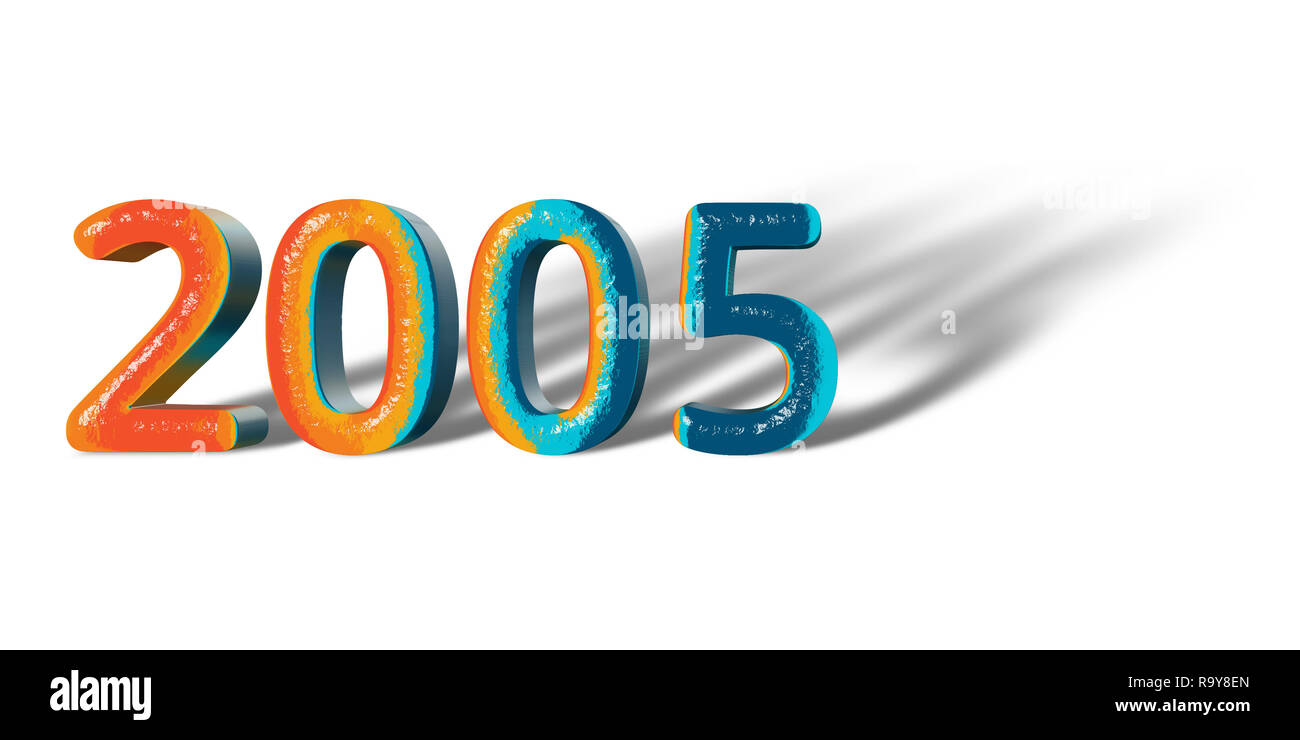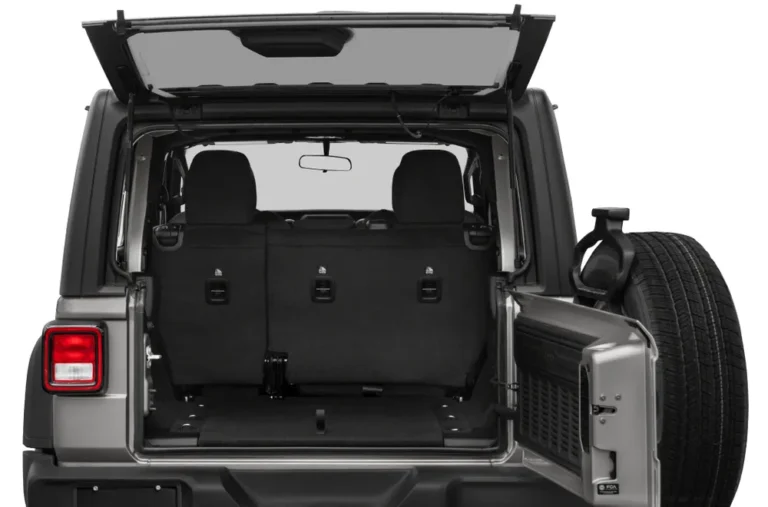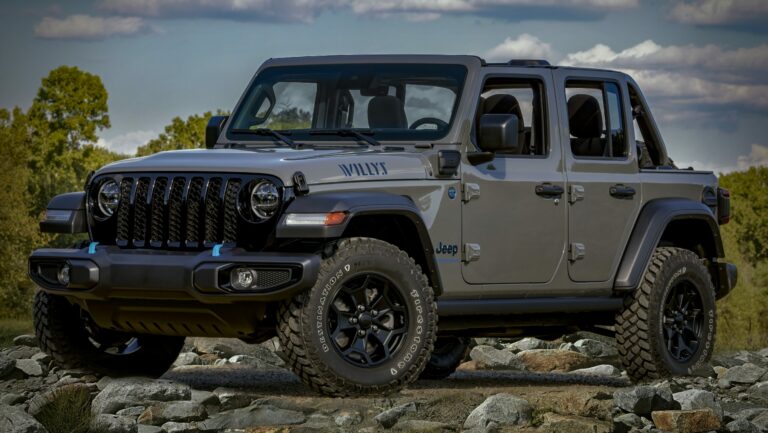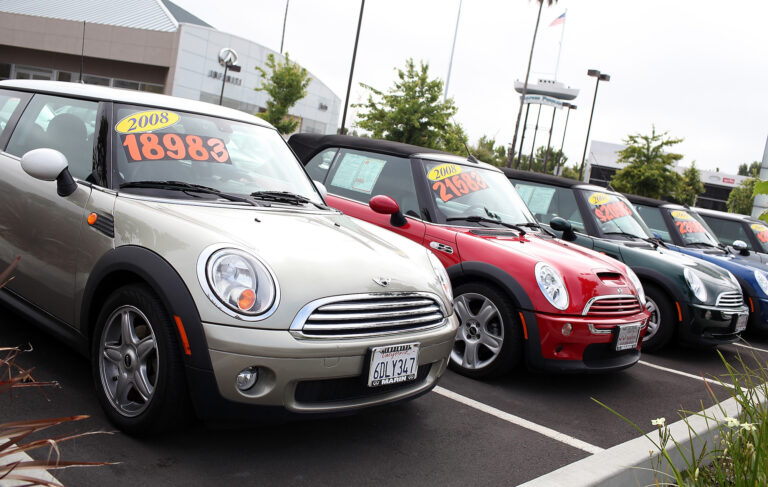2005 Jeep Grand Cherokee Water Pump: A Comprehensive Guide to Maintenance, Diagnosis, and Replacement
2005 Jeep Grand Cherokee Water Pump: A Comprehensive Guide to Maintenance, Diagnosis, and Replacement jeeps.truckstrend.com
The 2005 Jeep Grand Cherokee, a beloved vehicle known for its rugged capability and comfortable ride, relies on a complex network of systems to perform reliably. Among the most critical of these is the engine’s cooling system, and at its heart lies the water pump. Often overlooked until it fails, the water pump is the unsung hero responsible for circulating coolant throughout the engine, preventing catastrophic overheating and ensuring the longevity of your vehicle’s most vital component.
This comprehensive guide delves deep into the world of the 2005 Jeep Grand Cherokee water pump, exploring its function, common failure symptoms, diagnostic procedures, replacement considerations, and essential maintenance tips. Whether you’re a seasoned DIY enthusiast or simply seeking to understand your vehicle better, this article will equip you with the knowledge needed to keep your Grand Cherokee’s engine running cool and strong for years to come.
2005 Jeep Grand Cherokee Water Pump: A Comprehensive Guide to Maintenance, Diagnosis, and Replacement
Understanding the 2005 Jeep Grand Cherokee’s Cooling System
Before we focus on the water pump, it’s essential to grasp the entire cooling system’s function. The cooling system in your 2005 Jeep Grand Cherokee is designed to dissipate the immense heat generated by the internal combustion process. It comprises several key components working in harmony:
- Radiator: Acts as a heat exchanger, transferring heat from the coolant to the surrounding air.
- Coolant (Antifreeze): A mixture of water and ethylene or propylene glycol, designed to absorb heat and resist freezing/boiling.
- Thermostat: A temperature-sensitive valve that regulates coolant flow to the radiator, ensuring the engine reaches and maintains optimal operating temperature.
- Hoses: Rubber conduits that transport coolant between components.
- Cooling Fan: Draws air through the radiator, especially at low speeds or when stationary.
- Water Pump: The mechanical device that circulates the coolant throughout this entire system.

The water pump’s role is paramount. Without its constant circulation, coolant would quickly become saturated with heat, leading to engine overheating, potential head gasket failure, warped cylinder heads, and even complete engine seizure.
The Anatomy of a 2005 Jeep Grand Cherokee Water Pump
A water pump, despite its critical function, is a relatively simple mechanical device. It typically consists of:

- Housing: The main body that bolts to the engine block, containing all the internal components.
- Impeller: A finned rotor that, when spun, creates centrifugal force to push coolant through the system.
- Shaft: Connects the impeller to the pulley.
- Bearings: Support the shaft and allow it to spin smoothly. These are often the first components to fail.
- Seal: Prevents coolant from leaking out around the spinning shaft. This is another common failure point.
- Pulley: Mounted on the exterior, driven by the serpentine belt, which transfers power from the engine’s crankshaft to spin the shaft and impeller.

As the engine runs, the serpentine belt turns the water pump pulley, which in turn spins the shaft and impeller. The spinning impeller draws hot coolant from the engine block, pushes it through the radiator to be cooled, and then circulates the cooled fluid back into the engine, creating a continuous flow that regulates temperature.
Common Symptoms of a Failing Water Pump in a 2005 Jeep Grand Cherokee
Recognizing the signs of a failing water pump early can save you from significant engine damage and costly repairs. Pay close attention to these common symptoms:
- Engine Overheating: This is the most obvious and dangerous symptom. If your temperature gauge consistently reads high, or steam is coming from under the hood, your water pump may not be circulating coolant effectively.
- Coolant Leaks: The water pump’s internal seal can wear out, leading to coolant weeping or dripping from the pump’s weep hole or around its housing. You might see puddles of orange/red/green coolant (depending on the type used) under the front of your Grand Cherokee.
- Whining, Grinding, or Squealing Noises: A failing water pump bearing can produce a distinct high-pitched whine or grinding sound that increases with engine RPM. This noise typically comes from the front of the engine where the serpentine belt is located.
- Steam or Smoke from Under the Hood: While this often accompanies overheating, it’s a direct sign that coolant is escaping and boiling on hot engine surfaces.
- Loose Pulley: With the engine off and cool, you can sometimes gently wiggle the water pump pulley. Excessive play or wobbling indicates a failing bearing.
- Coolant Contamination/Low Coolant Level: A chronically low coolant level without an obvious leak elsewhere points to the water pump as a suspect. Contamination might occur if the pump’s internal components are corroding.
Diagnosing a Water Pump Issue
Accurately diagnosing a water pump problem is crucial.
- Visual Inspection: Look for visible coolant leaks around the water pump’s housing or weep hole. Check the coolant reservoir level.
- Listen for Sounds: With the engine running (and cool enough to touch safely), listen closely to the front of the engine. A mechanic’s stethoscope can pinpoint the source of a bearing noise.
- Check Pulley Play: As mentioned, with the engine off, gently try to wiggle the water pump pulley. There should be virtually no play.
- Monitor Temperature Gauge: Pay attention to how quickly your engine heats up and if it maintains a stable temperature during driving.
- Coolant Color/Condition: Inspect the coolant for discoloration, rust, or debris, which can indicate internal corrosion.
If you’re unsure, it’s always best to consult a qualified mechanic. They have specialized tools and experience to diagnose the issue accurately.
Why Do 2005 Jeep Grand Cherokee Water Pumps Fail?
Water pumps, like most mechanical components, have a finite lifespan. Several factors contribute to their eventual failure:
- Age and Mileage: The most common reason. Bearings wear out, seals degrade, and impellers can corrode or erode over time, especially after 60,000 to 100,000 miles.
- Bearing Failure: Constant rotation and heat stress cause the internal bearings to eventually wear down, leading to noise and wobble.
- Seal Degradation: The internal mechanical seal that prevents coolant from leaking around the shaft is made of rubber or ceramic and can dry out, crack, or wear down.
- Coolant Quality: Using the wrong type of coolant, mixing different coolants, or neglecting regular coolant flushes can lead to corrosion and deposits that attack the pump’s internal components and seals.
- Impeller Erosion/Cavitation: Over time, the constant flow of coolant can erode the impeller blades, reducing their efficiency. Cavitation (the formation and collapse of air bubbles) can also damage the impeller.
- Belt Tension Issues: An overly tight or loose serpentine belt can put undue stress on the water pump bearings.
Choosing the Right Replacement Water Pump
When it’s time to replace your 2005 Jeep Grand Cherokee water pump, you’ll encounter various options.
- OEM (Original Equipment Manufacturer): These are parts made by the same manufacturer that supplied Jeep for the original assembly. They typically offer the highest quality and perfect fit, but also come with the highest price tag.
- Aftermarket: These parts are made by third-party companies. They range widely in quality and price.
- Standard Aftermarket: Generally more affordable, but quality can vary. Look for reputable brands.
- Premium Aftermarket: Often meet or exceed OEM specifications, using high-quality materials and improved designs. These offer a good balance of cost and reliability.
Important Considerations:
- Engine Specificity: The 2005 Grand Cherokee came with several engine options (3.7L V6, 4.7L V8, and 5.7L Hemi V8). Ensure you purchase a water pump specifically designed for your engine. They are not interchangeable.
- Brand Reputation: Stick with well-known and trusted brands like Mopar (OEM), Gates, ACDelco, Bosch, Aisin, or Airtex.
- Warranty: Check the warranty offered by the manufacturer. A longer warranty often indicates higher confidence in the product’s quality.
- Gasket/O-rings: Most new water pumps come with the necessary gaskets or O-rings. If not, purchase them separately to ensure a leak-free seal.
The 2005 Jeep Grand Cherokee Water Pump Replacement Process
Replacing a water pump on a 2005 Grand Cherokee can be a challenging DIY project, especially for the V8 engines, due to tight spaces. It typically takes 3-6 hours for an experienced DIYer or mechanic.
Tools and Materials Needed:
- New water pump (with gasket/O-rings)
- New coolant (HOAT type for Jeep)
- Drain pan
- Socket wrench set, various extensions
- Torque wrench
- Serpentine belt tool or breaker bar
- Pliers
- Flathead screwdriver
- Rags, shop towels
- Safety glasses and gloves
- Optional: New serpentine belt, thermostat, thermostat housing gasket, hoses.
General Steps (Highly Simplified – Consult a Repair Manual for Detailed Instructions!):
- Safety First: Disconnect the negative battery terminal. Allow the engine to cool completely.
- Drain Coolant: Place a drain pan under the radiator and open the drain cock (or remove the lower radiator hose) to drain the coolant.
- Remove Obstructions: Depending on your engine, you may need to remove the fan shroud, cooling fan, or other components to access the water pump.
- Remove Serpentine Belt: Use a serpentine belt tool or breaker bar to release tension on the belt tensioner and remove the belt from the water pump pulley.
- Remove Hoses: Disconnect any hoses connected to the water pump.
- Remove Old Water Pump: Unbolt the water pump from the engine block. Be prepared for residual coolant to spill.
- Clean Mounting Surface: Thoroughly clean the engine block’s mating surface, removing all old gasket material or sealant. This is critical for a leak-free seal.
- Install New Water Pump: Apply a thin bead of RTV sealant (if required by the new pump’s instructions, otherwise use the new gasket/O-ring dry) to the clean mating surface and carefully position the new water pump. Insert and hand-tighten the bolts.
- Torque Bolts: Using a torque wrench, tighten the water pump bolts to the manufacturer’s specified torque settings in the correct sequence. This is vital to prevent leaks and damage.
- Reassemble: Reconnect hoses, reinstall the serpentine belt, cooling fan, shroud, and any other removed components.
- Refill Coolant: Fill the cooling system with the correct type of coolant (HOAT – Hybrid Organic Acid Technology).
- Bleed Air: This is a crucial step. Start the engine with the heater on full blast and allow it to warm up to operating temperature, ensuring the thermostat opens. As the engine runs, trapped air bubbles will rise to the reservoir. Top off coolant as needed. Some Grand Cherokees have a bleed screw; consult your manual. Continue until no more air bubbles emerge.
- Check for Leaks: Visually inspect all connections for leaks. Test drive the vehicle and monitor the temperature gauge closely.
Challenges: Stuck bolts, limited working space, and ensuring all air is bled from the system are common challenges. If you’re not comfortable, professional installation is recommended.
Maintenance Tips for Your 2005 Jeep Grand Cherokee’s Cooling System
Proactive maintenance can significantly extend the life of your water pump and the entire cooling system:
- Regular Coolant Flushes: Follow Jeep’s recommended service intervals (typically every 5 years or 100,000 miles) for coolant flushes and changes. Fresh coolant maintains its anti-corrosion properties.
- Use the Correct Coolant: Always use HOAT (Hybrid Organic Acid Technology) coolant, typically orange or purple in color, specifically designed for Chrysler/Jeep vehicles. Mixing coolant types can lead to chemical reactions that cause sludge and corrosion.
- Inspect Hoses and Clamps: Periodically check all radiator and heater hoses for cracks, bulges, or softness. Ensure hose clamps are tight.
- Monitor Temperature Gauge: Pay attention to your dashboard temperature gauge. Any consistent rise or erratic behavior warrants immediate investigation.
- Address Leaks Promptly: Even small coolant leaks can lead to significant problems down the line.
2005 Jeep Grand Cherokee Water Pump Price Table
The cost of replacing a 2005 Jeep Grand Cherokee water pump can vary based on the engine type, part quality (OEM vs. aftermarket), and labor rates in your area.
| Component / Service | Part Cost (Estimated Range) | Labor Cost (Estimated Range) | Total Cost (Estimated Range) | Notes |
| :—————— | :————————– | :————————— | :————————— | :————————————————————————————————————————————————————————————————————————————————————————————————————————————————————————————————————————————————————————————————————————————————————————————————————————————————————————————————————————————————————————————————————————————————————————————————————————————————————————————————————————————————————————————————————————————————————————————————————————————————————————————————————————————————————————————————————————————————————————————————————————————————————————————————————————————————————————————————————————————————————————————————————————————————————————————————————————————————————————————————————————————————————————————————————————————————————————————————————————————————————————————————————————————————————————————————————————————————————————————————————————————————————————————————————————————————————————————————————————————————————————————————————————————————————————————————————————————————————————————————————————————————————————————————————————————————————————————————————————————————————————————————————————————————————————————————————————————————————————————————————————————————————————————————————————————————————————————————————————————————————————————————————————————————————————————————————————————————————————————————————————————————————————————————————————————————————————————————————————————————————————————————————————————————————————————————————————————————————————————————————————————————————————————————————————————————————————————————————————————————————————————————————————————————————————————————————————————————————————————————————————————————————————————————————————————————————————————————————————————————————————————————————————————————————————————————————————————————————————————————————————————————————————————————————————————————————————————————————————————————————————————————————————————————————————————————————————————————————————————————————————————————————————————————————————————————————————————————————————————————————————————————————————————————————————————————————————————————————————————————————————————————————————————————————————————————————————————————————————————————————————————————————————————————————————————————————————————————————————————————————————————————————————————————————————————————————————————————————————————————————————————————————————————————————————————————————————————————————————————————————————————————————————————————————————————————————————————————————————————————————————————————————————————————————————————————————————————————————————————————————————————————————————————————————————————————————————————————————————————————————————————————————————————————————————————————————————————————————————————————————————————————————————————————————————————————————————————————————————————————————————————————————————————————————————————————————————————————————————————————————————————————————————————————————————————————————————————————————————————————————————————————————————————————————————————————————————————————————————————————————————————————————————————————————————————————————————————————————————————————————————————————————————————————————————————————————————————————————————————————————————————————————————————————————————————————————————————————————————————————————————————————————————————————————————————————————————————————————————————————————————————————————————————————————————————————————————————————————————————————————————————————————————————————————————————————————————————————————————————————————————————————————————————————————————————————————————————————————————————————————————————————————————————————————————————————————————————————————————————————————————————————————————————————————————————————————————————————————————————————————————————————————————————————————————————————————————————————————————————————————————————————————————————————————————————————————————————————————————————————————————————————————————————————————————————————————————————————————————————————————————————————————————————————————————————————————————————————————————————————————————————————————————————————————————————————————————————————————————————————————————————————————————————————————————————————————————————————————————————————————————————————————————————————————————————————————————————————————————————————————————————————————————————————————————————————————————————————————————————————————————————————————————————————————————————————————————————————————————————————————————————————————————————————————————————————————————————————————————————————————————————————————————————————————————————————————————————————————————————————————————————————————————————————————————————————————————————————————————————————————————————————————————————————————————————————————————————————————————————————————————————————————————————————————————————————————————————————————————————————————————————————————————————————————————————————————————————————————————————————————————————————————————————————————————————————————————————————————————————————————————————————————————————————————————————————————————————————————————————————————————————————————————————————————————————————————————————————————————————————————————————————————————————————————————————————————————————————————————————————————————————————————————————————————————————————————————————————————————————————————————————————————————————————————————————————————————————————————————————————————————————————————————————————————————————————————————————————————————————————————————————————————————————————————————————————————————————————————————————————————————————————————————————————————————————————————————————————————————————————————————————————————————————————————————————————————————————————————————————————————————————————————————————————————————————————————————————————————————————————————————————————————————————————————————————————————————————————————————————————————————————————————————————————————————————————————————————————————————————————————————————————————————————————————————————————————————————————————————————————————————————————————————————————————————————————————————————————————————————————————————————————————————————————————————————————————————————————————————————————————————————————————————————————————————————————————————————————————————————————————————————————————————————————————————————————————————————————————————————————————————————————————————————————————————————————————————————————————————————————————————————————————————————————————————————————————————————————————————————————————————————————————————————————————————————————————————————————————————————————————————————————————————————————————————————————————————————————————————————————————————————————————————————————————————————————————————————————————————————————————————————————————————————————————————————————————————————————————————————————————————————————————————————————————————————————————————————————————————————————————————————————————————————————————————————————————————————————————————————————————————————————————————————————————————————————————————————————————————————————————————————————————————————————————————————————————————————————————————————————————————————————————————————————————————————————————————————————————————————————————————————————————————————————————————————————————————————————————————————————————————————————————————————————————————————————————————————————————————————————————————————————————————————————————————————————————————————————————————————————————————————————————————————————————————————————————————————————————————————————————————————————————————————————————————————————————————————————————————————————————————————————————————————————————————————————————————————————————————————————————————————————————————————————————————————————————————————————————————————————————————————————————————————————————————————————————————————————————————————————————————————————————————————————————————————————————————————————————————————————————————————————————————————————————————————————————————————————————————————————————————————————————————————————————————————————————————————————————————————————————————————————————————————————————————————————————————————————————————————————————————————————————————————————————————————————————————————————————————————————————————————————————————————————————————————————————————————————————————————————————————————————————————————————————————————————————————————————————————————————————————————————————————————————————————————————————————————————————————————————————————————————————————————————————————————————————————————————————————————————————————————————————————————————————————————————————————————————————————————————————————————————————————————————————————————————————————————————————————————————————————————————————————————————————————————————————————————————————————————————————————————————————————————————————————————————————————————————————————————————————————————————————————————————————————————————————————————————————————————————————————————————————————————————————————————————————————————————————————————————————————————————————————————————————————————————————————————————————————————————————————————————————————————————————————————————————————————————————————————————————————————————————————————————————————————————————————————————————————————————————————————————————————————————————————————————————————————————————————————————————————————————————————————————————————————————————————————————————————————————————————————————————————————————————————————————————————————————————————————————————————————————————————————————————————————————————————————————————————————————————————————————————————————————————————————————————————————————————————————————————————————————————————————————————————————————————————————————————————————————————————————————————————————————————————————————————————————————————————————————————————————————————————————————————————————————————————————————————————————————————————————————————————————————————————————————————————————————————————————————————————————————————————————————————————————————————————————————————————————————————————————————————————————————————————————————————————————————————————————————————————————————————————————————————————————————————————————————————————————————————————————————————————————————————————————————————————————————————————————————————————————————————————————————————————————————————————————————————————————————————————————————————————————————————————————————————————————————————————————————————————————————————————————————————————————————————————————————————————————————————————————————————————————————————————————————————————————————————————————————————————————————————————————————————————————————————————————————————————————————————————————————————————————————————————————————————————————————————————————————————————————————————————————————————————————————————————————————————————————————————————————————————————————————————————————————————————————————————————————————————————————————————————————————————————————————————————————————————————————————————————————————————————————————————————————————————————————————————————————————————————————————————————————————————————————————————————————————————————————————————————————————————————————————————————————————————————————————————————————————————————————————————————————————————————————————————————————————————————————————————————————————————————————————————————————————————————————————————————————————————————————————————————————————————————————————————————————————————————————————————————————————————————————————————————————————————————————————————————————————————————————————————————————————————————————————————————————————————————————————————————————————————————————————————————————————————————————————————————————————————————————————————————————————————————————————————————————————————————————————————————————————————————————————————————————————————————————————————————————————————————————————————————————————————————————————————————————————————————————————————————————————————————————————————————————————————————————————————————————————————————————————————————————————————————————————————————————————————————————————————————————————————————————————————————————————————————————————————————————————————————————————————————————————————————————————————————————————————————————————————————————————————————————————————————————————————————————————————————————————————————————————————————————————————————————————————————————————————————————————————————————————————————————————————————————————————————————————————————————————————————————————————————————————————————————————————————————————————————————————————————————————————————————————————————————————————————————————————————————————————————————————————————————————————————————————————————————————————————————————————————————————————————————————————————————————————————————————————————————————————————————————————————————————————————————————————————————————————————————————————————————————————————————————————————————————————————————————————————————————————————————————————————————————————————————————————————————————————————————————————————————————————————————————————————————————————————————————————————————————————————————————————————————————————————————————————————————————————————————————————————————————————————————————————————————————————————————————————————————————————————————————————————————————————————————————————————————————————————————————————————————————————————————————————————————————————————————————————————————————————————————————————————————————————————————————————————————————————————————————————————————————————————————————————————————————————————————————————————————————————————————————————————————————————————————————————————————————————————————————————————————————————————————————————————————————————————————————————————————————————————————————————————————————————————————————————————————————————————————————————————————————————————————————————————————————————————————————————————————————————————————————————————————————————————————————————————————————————————————————————————————————————————————————————————————————————————————————————————————————————————————————————————————————————————————————————————————————————————————————————————————————————————————————————————————————————————————————————————————————————————————————————————————————————————————————————————————————————————————————————————————————————————————————————————————————————————————————————————————————————————————————————————————————————————————————————————————————————————————————————————————————————————————————————————————————————————————————————————————————————————————————————————————————————————————————————————————————————————————————————————————————————————————————————————————————————————————————————————————————————————————————————————————————————————————————————————————————————————————————————————————————————————————————————————————————————————————————————————————————————————————————————————————————————————————————————————————————————————————————————————————————————————————————————————————————————————————————————————————————————————————————————————————————————————————————————————————————————————————————————————————————————————————————————————————————————————————————————————————————————————————————————————————————————————————————————————————————————————————————————————————————————————————————————————————————————————————————————————————————————————————————————————————————————————————————————————————————————————————————————————————————————————————————————————————————————————————————————————————————————————————————————————————————————————————————————————————————————————————————————————————————————————————————————————————————————————————————————————————————————————————————————————————————————————————————————————————————————————————————————————————————————————————————————————————————————————————————————————————————————————————————————————————————————————————————————————————————————————————————————————————————————————————————————————————————————————————————————————————————————————————————————————————————————————————————————————————————————————————————————————————————————————————————————————————————————————————————————————————————————————————————————————————————————————————————————————————————-2005 Jeep Grand Cherokee Water Pump: A Comprehensive Guide to Maintenance, Diagnosis, and Replacement
The 2005 Jeep Grand Cherokee, a beloved vehicle known for its rugged capability and comfortable ride, relies on a complex network of systems to perform reliably. Among the most critical of these is the engine’s cooling system, and at its heart lies the water pump. Often overlooked until it fails, the water pump is the unsung hero responsible for circulating coolant throughout the engine, preventing catastrophic overheating and ensuring the longevity of your vehicle’s most vital component.
This comprehensive guide delves deep into the world of the 2005 Jeep Grand Cherokee water pump, exploring its function, common failure symptoms, diagnostic procedures, replacement considerations, and essential maintenance tips. Whether you’re a seasoned DIY enthusiast or simply seeking to understand your vehicle better, this article will equip you with the knowledge needed to keep your Grand Cherokee’s engine running cool and strong for years to come.
Understanding the 2005 Jeep Grand Cherokee’s Cooling System
Before we focus on the water pump, it’s essential to grasp the entire cooling system’s function. The cooling system in your 2005 Jeep Grand Cherokee is designed to dissipate the immense heat generated by the internal combustion process. It comprises several key components working in harmony:
- Radiator: Acts as a heat exchanger, transferring heat from the coolant to the surrounding air.
- Coolant (Antifreeze): A mixture of water and ethylene or propylene glycol, designed to absorb heat and resist freezing/boiling.
- Thermostat: A temperature-sensitive valve that regulates coolant flow to the radiator, ensuring the engine reaches and maintains optimal operating temperature.
- Hoses: Rubber conduits that transport coolant between components.
- Cooling Fan: Draws air through the radiator, especially at low speeds or when stationary.
- Water Pump: The mechanical device that circulates the coolant throughout this entire system.
The water pump’s role is paramount. Without its constant circulation, coolant would quickly become saturated with heat, leading to engine overheating, potential head gasket failure, warped cylinder heads, and even complete engine seizure.
The Anatomy of a 2005 Jeep Grand Cherokee Water Pump
A water pump, despite its critical function, is a relatively simple mechanical device. It typically consists of:
- Housing: The main body that bolts to the engine block, containing all the internal components.
- Impeller: A finned rotor that, when spun, creates centrifugal force to push coolant through the system.
- Shaft: Connects the impeller to the pulley.
- Bearings: Support the shaft and allow it to spin smoothly. These are often the first components to fail.
- Seal: Prevents coolant from leaking out around the spinning shaft. This is another common failure point.
- Pulley: Mounted on the exterior, driven by the serpentine belt, which transfers power from the engine’s crankshaft to spin the shaft and impeller.
As the engine runs, the serpentine belt turns the water pump pulley, which in turn spins the shaft and impeller. The spinning impeller draws hot coolant from the engine block, pushes it through the radiator to be cooled, and then circulates the cooled fluid back into the engine, creating a continuous flow that regulates temperature.
Common Symptoms of a Failing Water Pump in a 2005 Jeep Grand Cherokee
Recognizing the signs of a failing water pump early can save you from significant engine damage and costly repairs. Pay close attention to these common symptoms:
- Engine Overheating: This is the most obvious and dangerous symptom. If your temperature gauge consistently reads high, or steam is coming from under the hood, your water pump may not be circulating coolant effectively.
- Coolant Leaks: The water pump’s internal seal can wear out, leading to coolant weeping or dripping from the pump’s weep hole or around its housing. You might see puddles of orange/red/green coolant (depending on the type used) under the front of your Grand Cherokee.
- Whining, Grinding, or Squealing Noises: A failing water pump bearing can produce a distinct high-pitched whine or grinding sound that increases with engine RPM. This noise typically comes from the front of the engine where the serpentine belt is located.
- Steam or Smoke from Under the Hood: While this often accompanies overheating, it’s a direct sign that coolant is escaping and boiling on hot engine surfaces.
- Loose Pulley: With the engine off and cool, you can sometimes gently wiggle the water pump pulley. Excessive play or wobbling indicates a failing bearing.
- **Coolant





